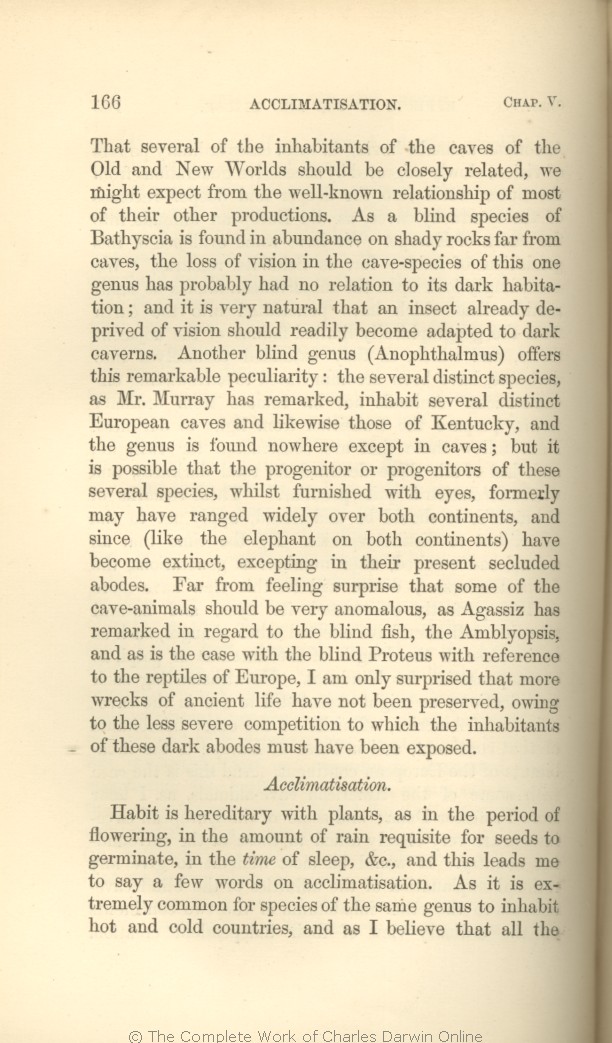That several of the inhabitants of the caves of the Old and New Worlds should be closely related, we might expect from the well-known relationship of most of their other productions. As a blind species of Bathyscia is found in abundance on shady rocks
far from | far from 1866 1869 1872 |
| out of the 1861 |
| of this one genus has 1866 1869 1872 |
| has 1861 |
| and 1861 1866 1869 | | for 1872 |
| very 1861 1866 1869 | very 1872 |
| peculiarity: 1861 1866 1869 | | peculiarity, 1872 |
| the several distinct 1861 1866 1869 |
| that the 1872 |
| has remarked, inhabit several distinct European caves and likewise those of Kentucky, and the genus is 1861 1866 1869 |
| observes, have not as yet been 1872 |
| nowhere 1861 1866 1869 | | anywhere 1872 |
| caves; 1861 1866 1869 | | caves, 1872 |
| but 1861 1866 1869 |
| yet those which inhabit the several caves of Europe and America are distinct; but 1872 |
| progenitor 1861 1866 1869 | | progenitors 1872 |
| or progenitors 1861 1866 1869 | or progenitors 1872 |
| species, 1866 1869 1872 | | species 1861 |
| whilst furnished with eyes, formerly may 1866 1869 |
| may formerly 1861 |
| whilst they were furnished with eyes, may formerly 1872 |
| widely 1861 1866 1869 | widely 1872 |
| since (like the elephant on both continents) have 1866 |
| have since (like the elephant on both continents) 1861 |
| then have 1869 1872 |
| abodes. 1866 1869 1872 | | habitations. 1861 |
| ..... 1861 1866 1869 1872 | | any 1859 1860 |
| inhabitants 1859 1860 1861 1866 1869 | | scanty inhabitants 1872 |
| must 1866 1869 | | will probably 1859 1860 | | will 1861 1872 |
|
Acclimatisation
. |
Acclimatisation
. 1866 1872 | |
Acclimatisation
.—
1859 1860 1861 | |
Acclimatisation
. 1869 |
|
Habit is hereditary with plants, as in the period of flowering, in the
amount | amount 1859 1860 1861 1866 1869 | | time 1872 |
| rain requisite for seeds to germinate, 1859 1860 1861 1866 1869 |
| sleep, 1872 |
|
time
1861 1866 1869 | | time 1859 1860 | | amount 1872 |
| sleep, 1859 1860 1861 1866 1869 |
| rain requisite for seeds to germinate, 1872 |
| species of 1859 1860 1861 1866 1869 |
| distinct species belonging to 1872 |
| ..... 1866 1869 1872 | | very 1859 1860 1861 |
| ..... 1866 1869 1872 | | very 1859 1860 1861 |
| and as I believe 1859 1860 1861 1866 |
| if it be true 1869 1872 |
|









